WORLD CLASS COACHING
Tactical Series Pep Guardiola
By Luca Bertolini
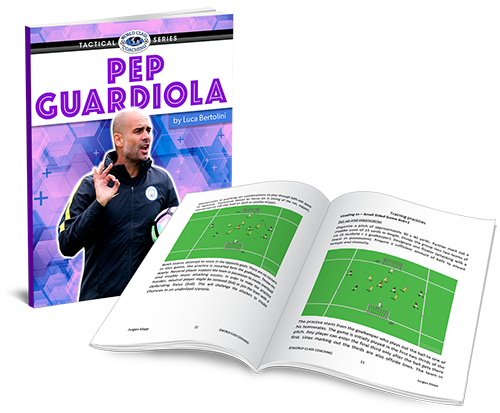
Table of Contents
PART THREE
A Complete Possession Phase
Transition to Defend
A complete possession phase and the developments of a move
The following footages sequence is taken from different matches of the last season to sum up all the principles of play we presented in the introduction part:
1) The goalkeeper creates numerical advantage to build up and play out
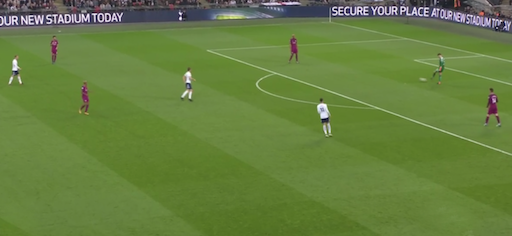
2) The center midfielder drops back to create numerical advantage (usually a 4 v 3)...
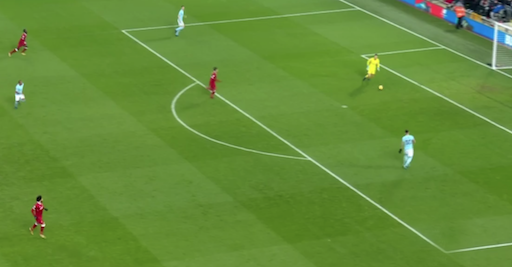
...and to play out.
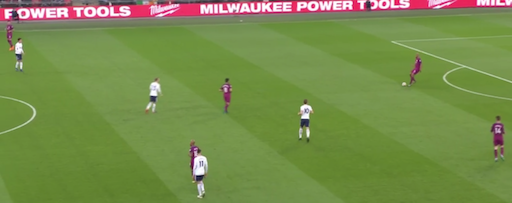
3) If a defender is able to exploit a space, he must dribble to invite the pressure of the opposition, freeing the spaces in behind
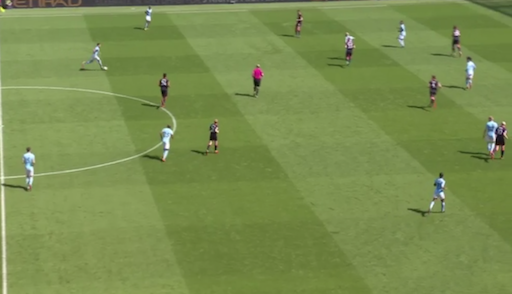
Otamendi is free to dribble here...
...and he can invite the pressure of Silva marker, opening a space behind him. Silva is free to receive the ball.
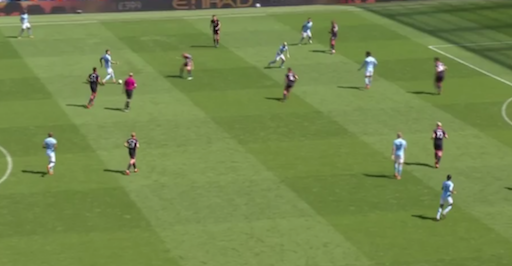
4) Attack the space at the back of an opponent who is pressing the ball carrier; playing in between the lines
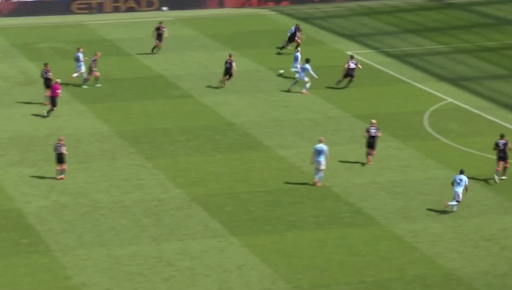
5) Overload a flank to switch the side of play. 4 v 4 duel on the flank to free and attack the opposition weak side.
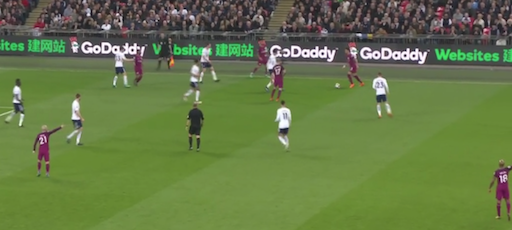
6) Switch the sides of play from one to other as quickly as possible to create 1 v 1 duels and spaces to be exploited among the opponents.
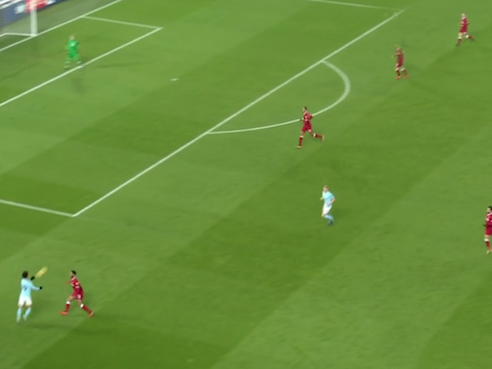
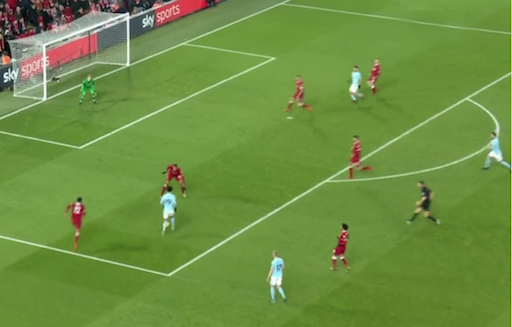
In these 1v1 situations on the flank, City has usually qualitative advantage, thanks to Sanè and Sterling and the defenders are often in a negative and difficult position; they must cover the weak side first and then press the wingers who usually has already received and controlled the ball. The positioning of the inverted fullbacks or of the advanced midfielders in the half spaces helps the connection through quick ball circulation.
Guardiola at Bayern already often used the attacking pattern of play with horizontal circulation on a flank, to manipulate the opposition’s defense shape and to open an opposite side, creating 1v1 situations with qualitative superiority.
With Manchester City this sequence has been made even quicker by switches side of play with long balls.
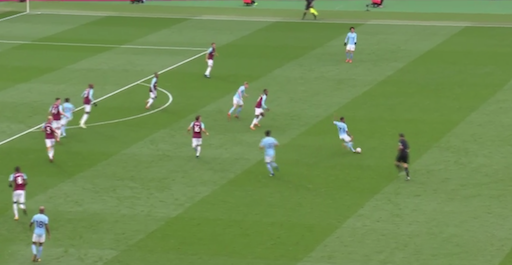
7) Move the ball quickly to create open ball situations (3 options for each players in possession shall be available) and attack the defense line at the back
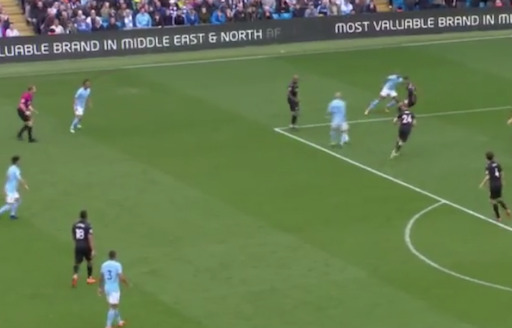
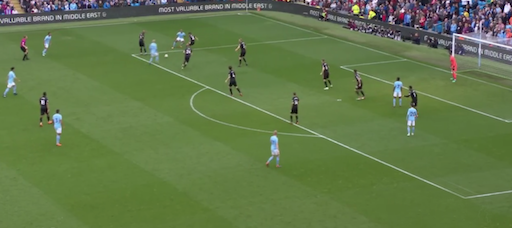
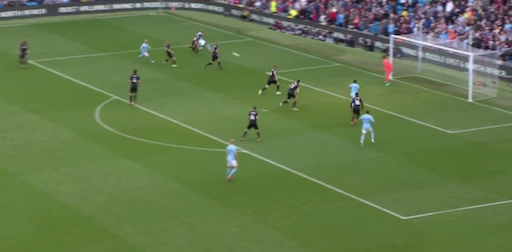
Due to the lack of header skills of City’s center forward Sergio Aguero, strong and low passes are played into the box from the byline as they are much more effective than a high cross where. The ball is played between the defenders and the goalkeeper as the players inside the penalty area often make runs to follow the move and to exploit the spaces in behind through low cutbacks. This method creates some of the simplest scoring chances.
8) Maximum width of the field to find the most suitable depth. The wingers are placed between the last defender and the sideline and more often, they are placed on it without the ball.
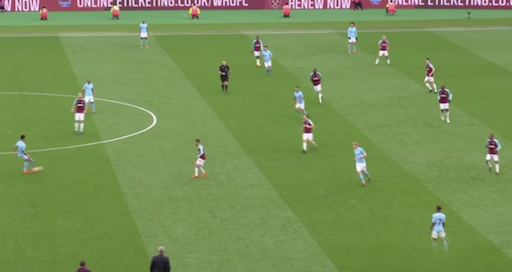
9) Place the players on different lines to make the start of the moves easier
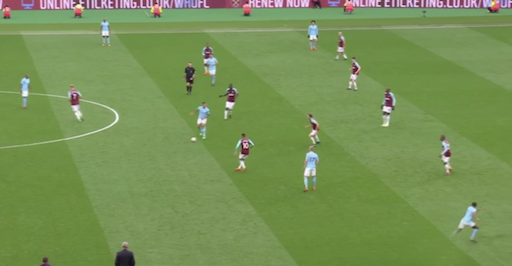
10) Search for the “3rd man” between the pressure lines of the opposition.
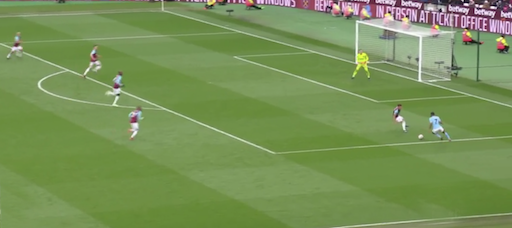
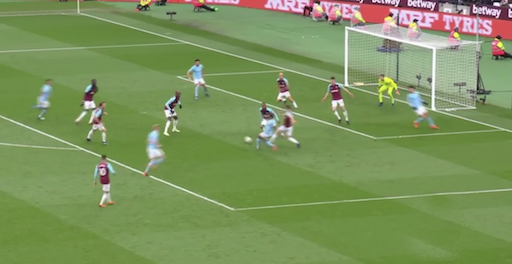
The third men are usually Silva and De Bruyne; two dynamic advanced midfielders who build up in the middle third (Silva more than De Bruyne), attack the second balls (De Bruyne more than Silva), support the wingers when they are near the ball and who attack the opposition goal, when the ball is played along the opposite flank.
Silva drops back to play out with vertical movements from the opposition backline and he usually stays placed between this opposition backline and the first midfielders’ lines; De Bruyne attacks more directly the final third along the right side, supporting the right winger Sterling.
Transitions to defend
Manchester City is a wider team than Barcelona and Bayern Munich, and even deeper on the field, as long passes are much more used than during La Liga and Bundesliga seasons. Also the distances among the players are larger while building up and during the possession phases.
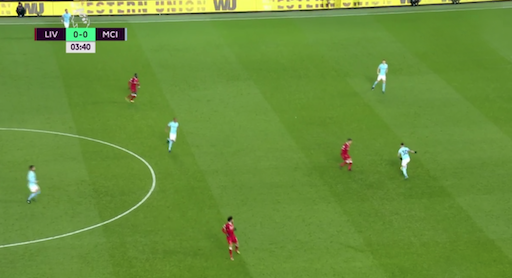
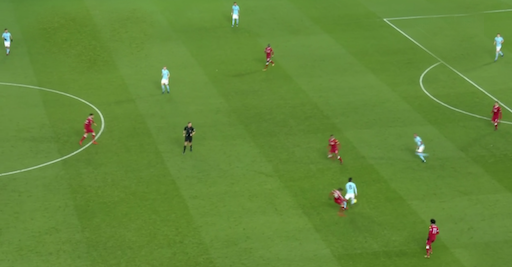
Gundogan has the possession in this picture, but he is under pressure; the only close and easy pass option is a back pass toward Fernandinho; to play toward all the other teammates, means to cut an opposition line because of their positions. This is a significant difference from Barcelona pattern of play that was used to build up and to play out; and it's much more similar to the Bayern Munich one, that was carried out through Alonso, Lahm and Alaba.
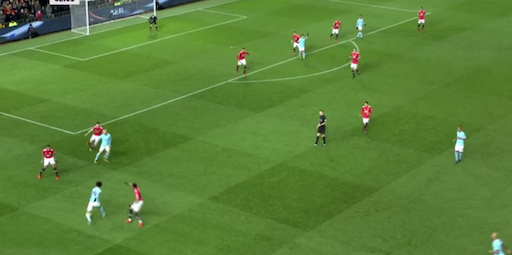
When one winger has the ball on the flank, there are teammates who are placed inside the opposition penalty area.

Walker has the ball and seven players are placed over the ball line, exploiting all the width of the field. If the opposition team defends the depth spaces, all City players are free to receive (as in the picture), if the opposition defends high marking on, there are available spaces at the back and toward the goal, and if they defend a potential strong side, a weak one will be created.
The possession structure with short distances among the players should be the key for an immediate counter pressing in case of loss of possession; if they are placed wide, the players might be alone against the new ball carrier, in case of loss of possession and without any chance of closure of passing options and pressure.
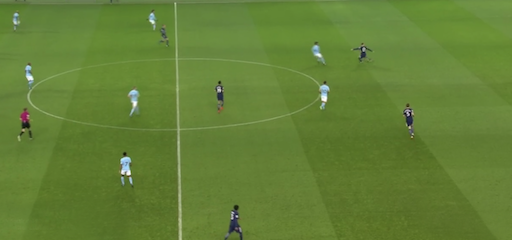
Guardiola fixed the potential issue of isolation of the players who lose the possession and of all the others on the field behind the ball line, with some easy principles of the forward defensive play:
1) Support players around the ball area; the second defender on the ball must cover the teammates who lost the possession and double the mark if the time allows him. A third player must cover the spaces just out of the ball area or mark the most dangerous opponents.
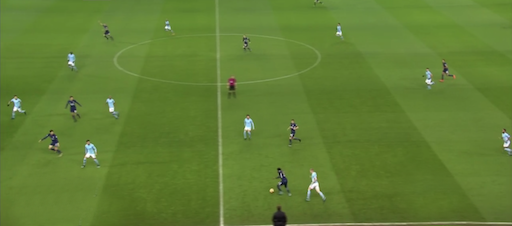
De Bruyne is on the opposition ball carrier; Gundogan is covering the easiest and nearest passing solution, Walker is placed to cover the flank and Otamendi together with Fernandinho would be able to double the mark on the opposition center forwards.
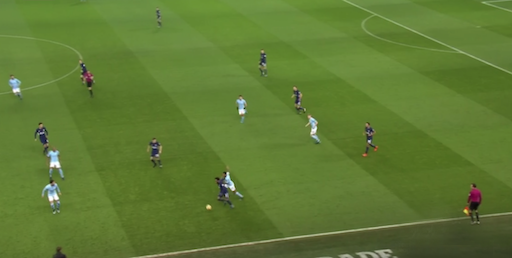
Sterling is involved in a 1 v 1 defense duel against the opposition ball carrier, Walker is covering the flank and Fernandinho can press the center passing options.
2) The inverted fullbacks congest the center spaces to allow the counter pressing phase and to avoid oppositions counter attacks inside there. Delph is closing the center left space together with the balance midfielder Fernandinho, who is placed very high on the pitch. The player with the ball can't start any counter attack, as forward passing lanes are closed.
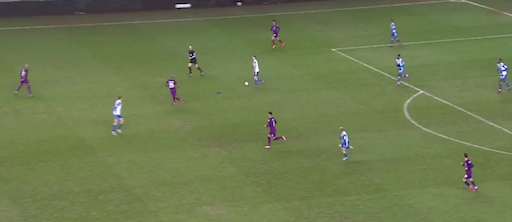
(The roles of Manchester City inverted fullbacks, when in possession, are not restricted to the center, but they are often placed into their half spaces, as link players from the defenders to the wingers).
3) The winger near the ball puts pressure to either prevent a pass out to the fullback, or to press him as he receives the ball. Sterling is running after the opposition left fullback to press him as the first attempt of passing lane closure wasn't successful. Bernardo Silva is ready to double the mark on him.
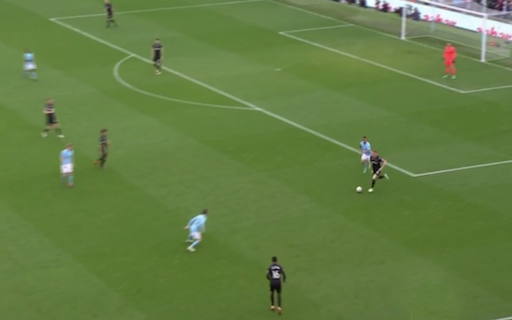
4) High intensity pressure on the new ball carrier of the nearest player of the defending team, usually the player who lost it.
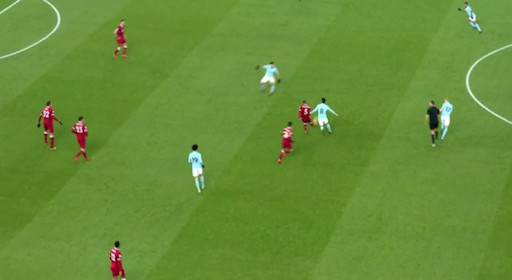
Gundogan forces the opposition player to pass back; De Bruyne and Sterling are closing forward passing lanes and Sanè and Aguero are ready to press the defenders as they receive.
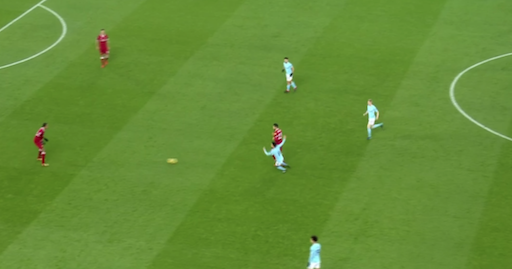
In this similar situation, Gundogan is pressing again and Sanè, De Bruyne and Sterling are closing the forward passing lanes to the opposition defenders.


